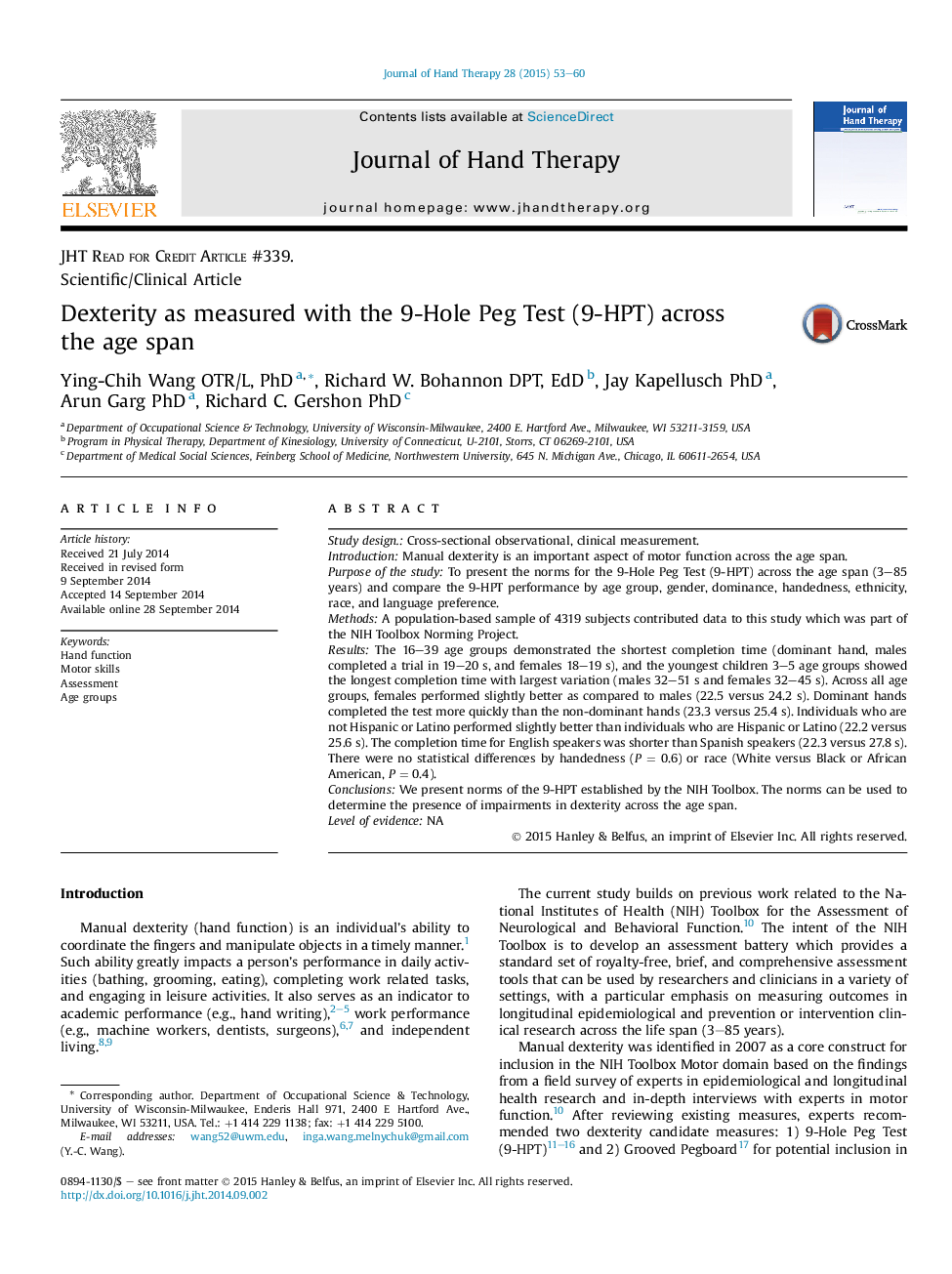| Article ID | Journal | Published Year | Pages | File Type |
|---|---|---|---|---|
| 2698142 | Journal of Hand Therapy | 2015 | 8 Pages |
Study designCross-sectional observational, clinical measurement.IntroductionManual dexterity is an important aspect of motor function across the age span.Purpose of the studyTo present the norms for the 9-Hole Peg Test (9-HPT) across the age span (3–85 years) and compare the 9-HPT performance by age group, gender, dominance, handedness, ethnicity, race, and language preference.MethodsA population-based sample of 4319 subjects contributed data to this study which was part of the NIH Toolbox Norming Project.ResultsThe 16–39 age groups demonstrated the shortest completion time (dominant hand, males completed a trial in 19–20 s, and females 18–19 s), and the youngest children 3–5 age groups showed the longest completion time with largest variation (males 32–51 s and females 32–45 s). Across all age groups, females performed slightly better as compared to males (22.5 versus 24.2 s). Dominant hands completed the test more quickly than the non-dominant hands (23.3 versus 25.4 s). Individuals who are not Hispanic or Latino performed slightly better than individuals who are Hispanic or Latino (22.2 versus 25.6 s). The completion time for English speakers was shorter than Spanish speakers (22.3 versus 27.8 s). There were no statistical differences by handedness (P = 0.6) or race (White versus Black or African American, P = 0.4).ConclusionsWe present norms of the 9-HPT established by the NIH Toolbox. The norms can be used to determine the presence of impairments in dexterity across the age span.Level of evidenceNA
